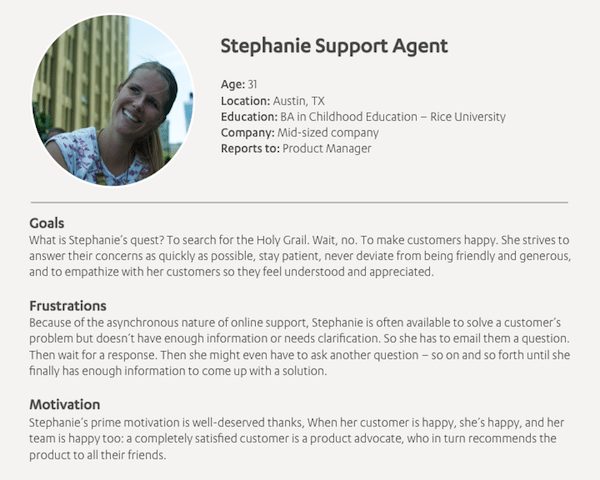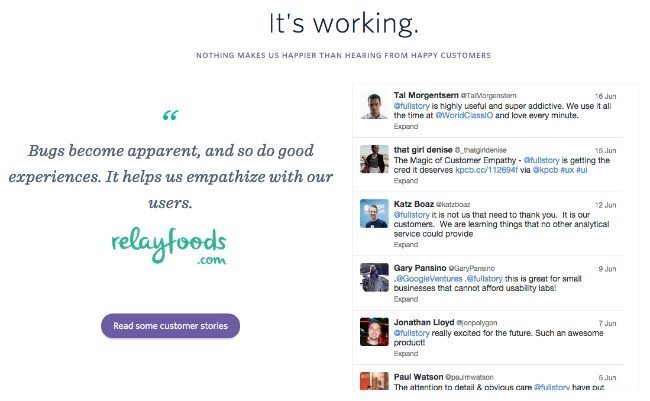June 19, 2015
Storytelling In Marketing
Storytelling is a hot topic for marketing strategists. Evidence is piling up everywhere: the #storytelling hashtag is blowing up Twitter with 4-5 new tweets every minute, a Google search for “storytelling marketing” turns up articles, blogs, and websites in every language and locale, and if we want to see which companies place a high value on storytelling, search LinkedIn for the job title “Storyteller.” It turns up over 14,000 results. So why has storytelling gained so much traction in the marketing world, so quickly? Fast Company explains: “It’s far easier for us to remember stories than cold hard facts because our brains make little distinction between an experience we are reading about and one that is actually happening.” As a powerful tool that can capture your audience’s attention and earn a coveted spot in their overloaded memories, storytelling is something every company should be taking advantage of. In this article, I’ll talk about 3 storytelling techniques we use at FullStory, and how you can put them to work for your company.
1. Understand your customer’s unique stories
Odds are your business has different types of customers. In our case as a Software-as-a-Service company, our customers range from user experience designers to product managers to developers and support agents. There is no one-size-fits-all sales demo or use case for them all. Because different types of customers have their own stories, it can be difficult for likely buyers to immediately see the value in your product or service. The answer? Deliver unique messages to each of your different personas. A persona is a written characterization of your customer, not as a sales target, but as a real live human. Personas will help you get into the minds of your customers and understand what messages will resonate with them. Below is a persona we use in-house. Meet Stephanie: 
How to create a persona
When you begin to develop personas to inform your marketing, do your research. Interview real subjects, not behind a one-way mirror, but over a cup of coffee. Here’s a list of ideas to get your creativity flowing, but expand this list and get as detailed as your heart desires:
- What is their name, job title, and educational background?
- Where do they live? What is their level of income?
- What is their home life like? Are they married? Do they have kids? Pets?
- What are their work goals? How do they (or their bosses) define success?
- Why did they enter that line of work? Are they passionate about it? Why or why not?
- What frustrates them or makes their job harder than it has to be?
Now when you craft new marketing efforts and write content, emails, social media posts, or ads, think of your personas. They’ll inform not only what you write, but how and even when you put it out there. For example, if your persona is a work-at-home dad, you wouldn’t want to publish your content between 3 and 5 pm, when he’s picking his kids up from school and helping them with their homework.
2. Brag about your customers all the time
Make your customers the hero in your marketing. In the process, you’ll get loads of interesting, credible stories about how your service or product is useful to real companies. Practically speaking, this means featuring short vignettes of customers in your email newsletter, writing full-on case studies on your website or blog, and prominently displaying customer testimonials everywhere you can. Start by curating your “Wall of Love,” a Twitter list populated with tweets about your product by happy customers. You can use these tweets in a variety of ways:
- Schedule a slow drip of customer testimonial tweets on your company Twitter feed
- Display a few selected tweets on your homepage, as ZenPayroll tastefully demonstrates
- Embed the list so that it updates every time you add a new tweet, like we do at FullStory
 Of course, it doesn’t stop with tweets. Like I mentioned above, going in-depth about what people have accomplished with your product or service is a great way to make customers look like heroes. Zendesk does a terrific job of this with their customer stories. Testimonials, stories, and Twitter walls-of-love are incredibly powerful pieces of content that play back into the FastCompany article I quoted above: when you tell stories effectively, a person’s brain processes the information as if they’re actually living the experience. Telling your customer’s story in an interesting, compelling way puts your prospect in the shoes of your customer, which in turn leads them to becoming your customer.
Of course, it doesn’t stop with tweets. Like I mentioned above, going in-depth about what people have accomplished with your product or service is a great way to make customers look like heroes. Zendesk does a terrific job of this with their customer stories. Testimonials, stories, and Twitter walls-of-love are incredibly powerful pieces of content that play back into the FastCompany article I quoted above: when you tell stories effectively, a person’s brain processes the information as if they’re actually living the experience. Telling your customer’s story in an interesting, compelling way puts your prospect in the shoes of your customer, which in turn leads them to becoming your customer.
3. Tell your company story with pizzazz
Figure out what it is to be your company, or your product. What’s important to you? What role do you want to occupy in your customer’s life? What evil are you trying to eradicate from the earth? In our case, it’s bad user experience on the web, but if you’re a cleaning products company it could be mold, or if you sell motorcycles, maybe you’re trying to erase boredom and repetition from the lives of your 40-year-old male audience. Your audience wants to know what you’re all about, where you came from, and what you’re like. Try telling your story with an infographic, a page on your site (check out Autopilot’s About Us page), or a video, to name a few ways. Just don’t do something like this. Unless it’s on purpose. As an example, BambooHR does a solid job of telling their company story with personality…  More than just on your About page, every little piece of communication is a chance to let your story, voice, and personality shine. You may have already thought about tweets, blog writing, and website content. But what about 404 pages and error messages? User manuals? Password reset emails? In-app tooltips? Never let a chance to delight your customers and strengthen your brand identity slip by. At FullStory, we’ve even gone as far giving our roles quirky, creative titles – and by publishing them on our job search page, we get a chance to give future applicants (and any other curious readers) a little taste of life at the office.
More than just on your About page, every little piece of communication is a chance to let your story, voice, and personality shine. You may have already thought about tweets, blog writing, and website content. But what about 404 pages and error messages? User manuals? Password reset emails? In-app tooltips? Never let a chance to delight your customers and strengthen your brand identity slip by. At FullStory, we’ve even gone as far giving our roles quirky, creative titles – and by publishing them on our job search page, we get a chance to give future applicants (and any other curious readers) a little taste of life at the office.  Yes, Hugger is a real job title. We could have said “Customer Success Agent,” but we thought Hugger was more fun. More FullStory.
Yes, Hugger is a real job title. We could have said “Customer Success Agent,” but we thought Hugger was more fun. More FullStory.
Be a storyteller
Stories are a powerful tool to win customer’s hearts and minds. To make storytelling a regular part of your marketing strategy, rally your resources to:
- Connect emotionally with potential customers by using personas
- Brag about your customers’ accomplishments and share their stories
- Tell your company’s story, every day, everywhere
You now have three solid storytelling techniques to apply in your company’s marketing. Go forth and use storytelling to sell, delight, and grow! What storytelling techniques do you use in your own business? How have you seen stories be effective in boosting your brand? Let us know in the comments.













